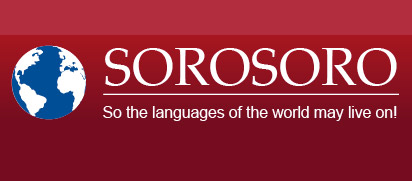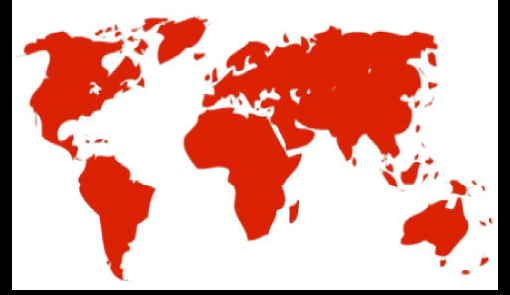Print  |
|


Oto-Manguean language family
Where are Oto-Manguean languages spoken?
These languages are spoken in Central America, in Central and Southern Mexico (i.e. in the states of Mexico, Oaxaca, Guanajuato, Chiapas, Puebla, Hidalgo, Querétaro and Guerrero).
.
Who speaks Oto-Manguean languages?
They are spoken by indigenous populations of America, which inhabited the region long before its colonization by Europeans.
.
Total number of speakers (estimates):
Approximately 2,000,000 according to the Ethnologue website.
UNESCO’s data is too fragmented to calculate a global estimate.
.
Classification:
The Oto-Manguean language family includes 23 or 24 active languages.
Western Oto-Manguean sub-family
Oto-Pamean-Chinantecan branch
Oto-Pamean group
Mazahua: 115,000 speakers according to UNESCO and 350,000 according to SIL
Otomi (dialect group): 225,800 speakers according to UNESCO
Chichimeca Jonaz: 1,641 speakers according to INALI and 1,200 according to SIL
Matlatzinca (also known as Pirinda): 651 speakers according to UNESCO and 1,300 speakers according to SIL
Ocuilteco (also known as Tlahuica and Atzingo): 405 speakers according to UNESCO
Pame (Mexico): 7,700 speakers according to UNESCO and 9,966 speakers according to SIL
Chinantecan group
Chiltepec Chinantec: 4,000 speakers according to SIL
Ojitlán Chinantec: 22,000 speakers according to SIL
Palantla Chinantec: 12,000 speakers according to SIL
Quiotepec Chinantec: 8,000 speakers according to SIL
San Juan Lalana Chinantec: 10 500 speakers according to SIL
Usila Chinantec: 9 000 speakers according to SIL
Tlapanecan-Manguean branch
Tlapanecan-Subtiaban group
Subtiaba: extinct
Tlapanecan (dialect group): 23,652 speakers according to UNESCO
Manguean group
Chiapaneco: extinct according to UNESCO and 17 speakers according to SIL
Mangue: extinct
Eastern Oto-Manguean sub-family
Popolocan-Zapotecan branch
Popolocan group
Chocho: 350 speakers according to UNESCO, 920 speakers according to the Latin Union and 770 speakers according to SIL
Ixcateco: 535 speakers according to INALI and 119 according to SIL
Mazateco (dialect group): 165,596 speakers according to UNESCO and 174,000 speakers according to SIL
Popoloca: 13,298 speakers according to UNESCO and 23,200 speakers according to SIL
Zapotecan group (Oaxaca)
Chatino: 40,722 speakers according to the Latin Union and 23,000 speakers according to SIL
Zapoteco (dialectal group): 785,000 speakers according to SIL
Amuzgo branch
Amuzgo (dialect group, Guerrero & Oaxaca): 29,000 speakers according to SIL
Mixtecan branch
Cuicateco (Oaxaca): 11,765 speakers according to UNESCO and 10,000 speakers according to SIL
Mixteco (Guerrero, Puebla, Oaxaca): 511,000 speakers according to SIL
Trique (Oaxaca): 23,000 speakers according to SIL
.
Observations on the classification of Oto-Manguean languages:
We have followed Campbell’s classification system (Campbell, 1997).
The number of Oto-Manguean languages varies between 23 and 174, depending on the sources consulted and on the criteria used to distinguish a language from a dialect. The Ethnologue website, for example, cites 14 Chinantecan languages and 53 Mixtecan languages.
.
Are Oto-Manguean languages endangered?
UNESCO classifies several Oto-Manguean languages as endangered.
Subtiaba and Mangue, two languages belonging to this family that were once spoken in Nicaragua and Costa Rica, are now extinct.
Chiapaneco, once spoken in Chiapas, is also probably extinct.
Among the active Oto-Manguean languages, Matlazinca, Ocuilteco, Pame, Chocho and Popoloca are considered severely endangered, or even critical.
Most of the other active Oto-Manguean languages are “vulnerable” according to UNESCO: for the time being, they are not endangered, but they could become endangered in the future.
Mixteco and Zapoteco are the two exceptions, with 2.1 million speakers between them. Yet certain dialectical variations of these two languages are disappearing.
There is no available information on the vitality of the languages belonging to the Chinantecan group, which are spoken in the region of Oaxaca. However, with the entire group totalling only 90,000 speakers, we can assume that the languages are “vulnerable” at the very least.
.
Sources:
Campbell, Lyle (1997). American Indian languages: the historical linguistics of Native America. Oxford: Oxford University Press.
Ethnologue website
INALI website
Latin Union website
UNESCO website
Please do not hesitate to contact us should you have more information on this language: contact@sorosoro.org
Fact sheets available for languages in this family :








